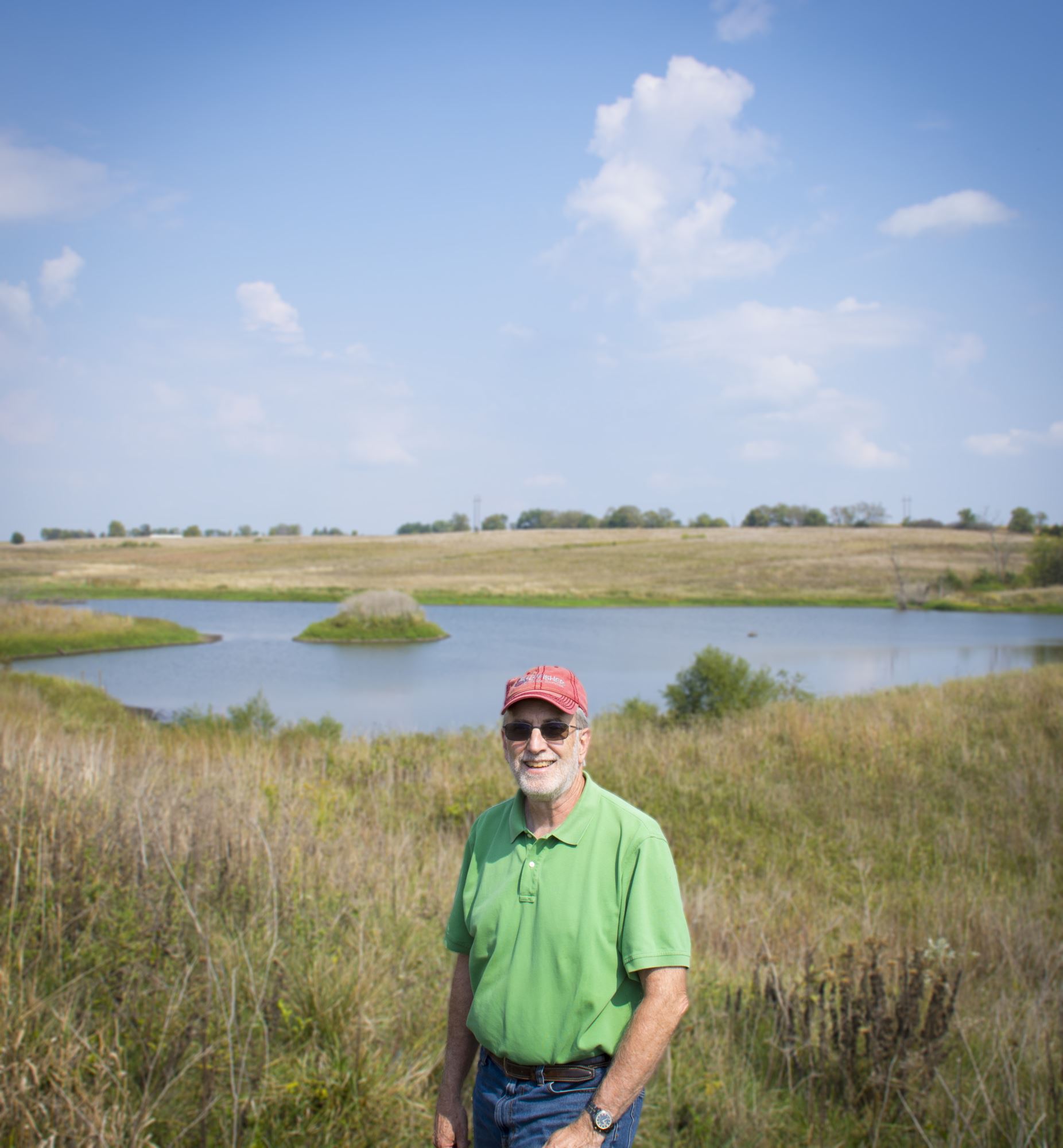Liquid Assets
By Katy Heggen on November 10, 2017 in Blog
When John and Susan Aschenbrenner purchased 212 acres just outside Osceola in Clarke County, they had dreams of creating a hobby farm. The property would provide a home for their horses, a place to get away and be a great way to diversify their investments.
However, after deciding the horses would be too far away from the family’s home in the Des Moines metro, they started thinking about other options.
“It isn’t good farm land, and I wasn’t having a lot of luck finding a tenant that shared my vision,” John said. “At that point, I decided to put it in the Conservation Reserve Program.”
John planted native grasses on over half the property. He built a couple of ponds so the family could fish. It was around this time that John was talking with the Natural Resource Conservation Service (NRCS), who asked if he would ever consider building a wetland on the property.

This excited John, an avid outdoorsman and the current board chair of The Nature Conservancy in Iowa. And what began as a way to diversify his portfolio began to reveal itself as an opportunity to invest in something much larger.
The Aschenbrenners’ land is located northwest of town at the headwaters of West Lake, a 320-acre public lake that is also the drinking water source for the City of Osceola and parts of Clarke County. Two-thirds of the water that flows into the lake flows through the Aschenbrenners’ land.
“John and Susan’s land has a huge impact on the water quality of West Lake,” said INHF Conservation Easement Director Erin Van Waus. “The lake is susceptible to high levels of atrazine, a common herbicide, and was included on the 2015 Iowa Impaired Waters list.”
In 2012, the 23-acre wetland was built with assistance from the NRCS and Southern Iowa Development and Conservation Authority. The massive wetland, which utilizes a rock chute dam to help control the flow of water leaving the wetland and entering the lake, captures approximately 2,850 tons of sediment and 3,700 pounds of phosphorus per year. Experts estimate it’s helped expand the life expectancy of the lake by as much as 20 years. The wetland and other conservation practices on the property also provide incredible wildlife habitat and recreation opportunities.
The Aschenbrenners were keen to permanently protect the property. It was also important to them to share this special place and all it has to offer with others. Working with Iowa Natural Heritage Foundation, the Aschenbrenners placed a conservation easement on the land. The easement made it more financially possible for the Iowa DNR to purchase the land and open it to the public.
“This is a great example of a lot of different entities working together to find innovative ways to achieve multiple goals,” said INHF President Joe McGovern. “This is what conservation in Iowa is all about. No one person or entity can do it alone.”
For John, it just felt like the right thing to do.
“I have found so much enjoyment throughout my life fishing, hunting and exploring Iowa’s outdoors,” John said. “We come to love, understand and appreciate nature by experiencing it. I want others to have that opportunity.”